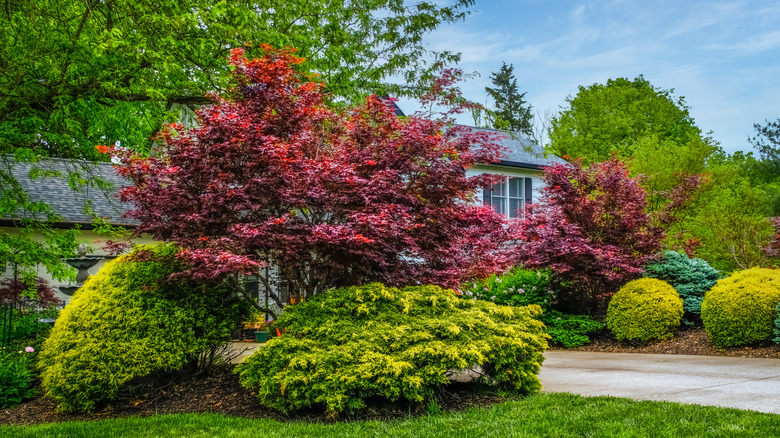The Best Method For Propagating A Japanese Maple Tree
A Japanese maple tree (Acer palmatum) is a beautiful addition to any outdoor space. If you don't already have one of these, there are plenty of gorgeous Japanese maple tree varieties that will add beauty to your yard. This tree is perfect for growing in smaller spaces and there are even cultivars suitable for growing in pots. If you live anywhere in USDA hardiness zones 5 through 8, you can grow this outstanding tree in your yard. But, what if you have space for another one and you want to try your hand at propagating? The best method for propagating a Japanese maple tree at home is by taking cuttings and allowing them to root in a controlled environment.
In the nursery trade, Japanese maples are commonly propagated from seed (to get the rootstock) and then grafted to achieve the desired cultivars. Grafting is a fairly involved process and takes quite a bit of practice to get right, especially if you've never done it before. That's why using stem cuttings is much easier.
Before planting one of these trees in the yard, make sure they're not invasive in your area. These trees are listed as invasive in New Jersey, Virginia, and Pennsylvania, and growing them there could be harmful to local ecosystems. However, if you're in a different state, a Japanese maple is one of the trees to consider planting to help butterflies and pollinators thrive in your yard.
How to propagate a Japanese maple using stem cuttings
The first thing you want to do is create a controlled environment for your cuttings. If you don't have a greenhouse, a large plastic container with a lid will work. Cut some holes in the base for drainage and a few in the lid for airflow. Make your own potting mix by mixing equal parts peat and perlite. Take stem sections from new growth, early in the morning, in late spring or early summer. Each stem cutting should have two or three nodes. Remove the bottom leaves and wound the cutting by slicing off a small piece of the bark on one side about 1 to 1½ inches long. After wounding, immediately immerse your cutting into some liquid rooting hormone.
Next, make a hole in the potting mix and insert the stem of your cutting, ensuring the wounded section is below the soil surface. The stem should be buried around 2 inches deep. Once done, mist the leaves with a water sprayer and put the lid on the "propagation" box. It's vital that you mist the leaves of your cuttings several times a day, so they don't dry out. Place your cuttings in a warm spot but out of direct sunlight. Once roots have developed, pot your cuttings into individual pots. Learn how to grow and care for your Japanese maple once the young trees mature.
